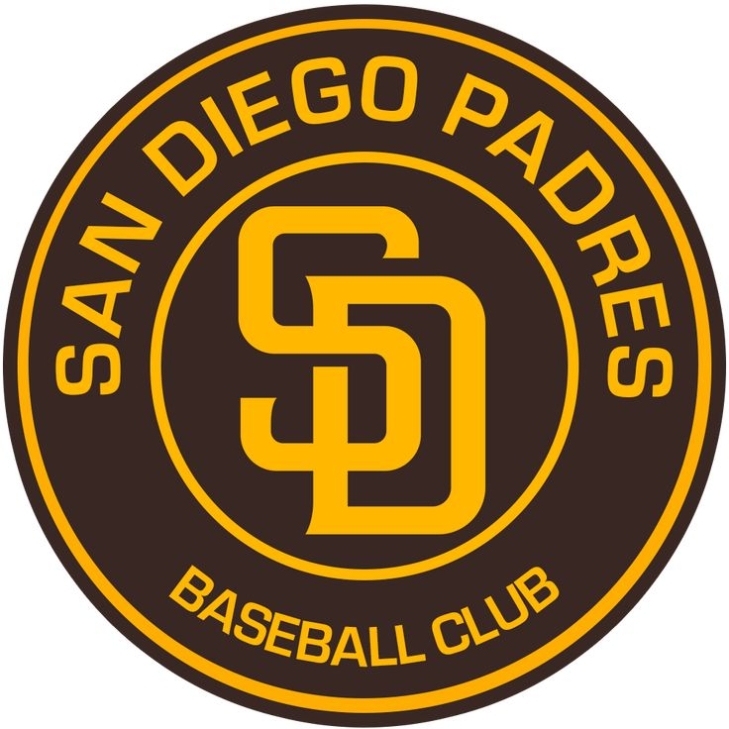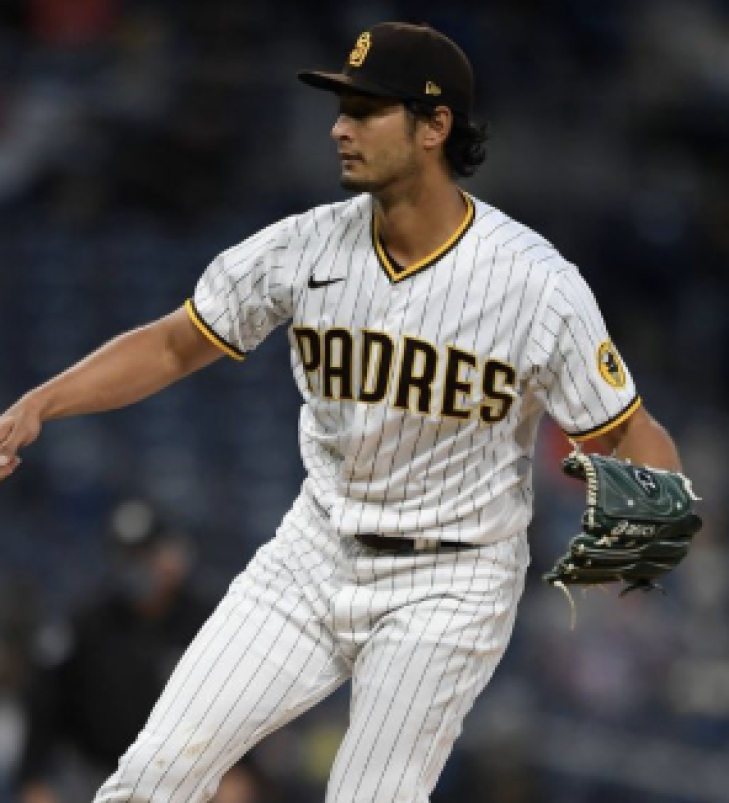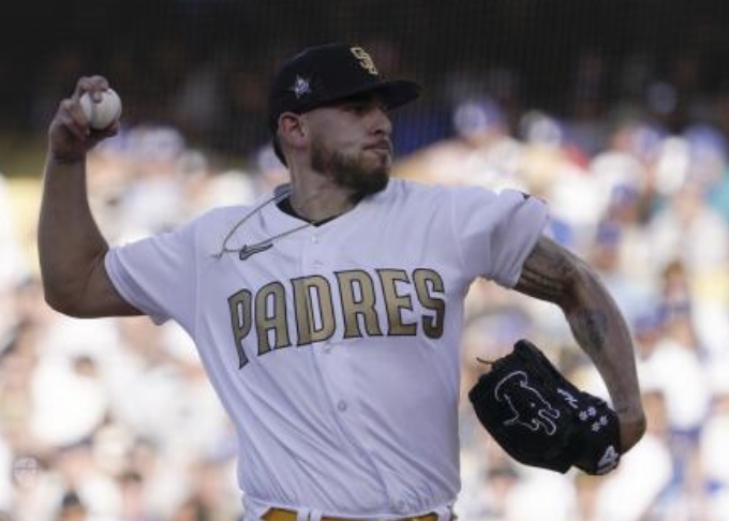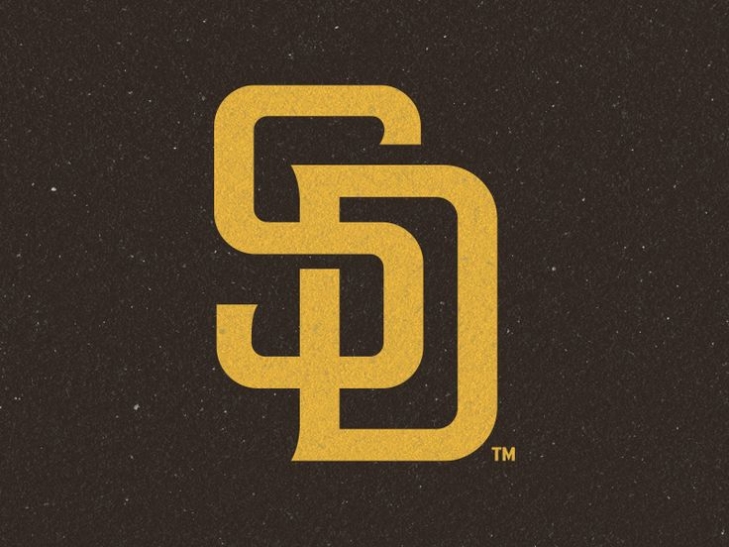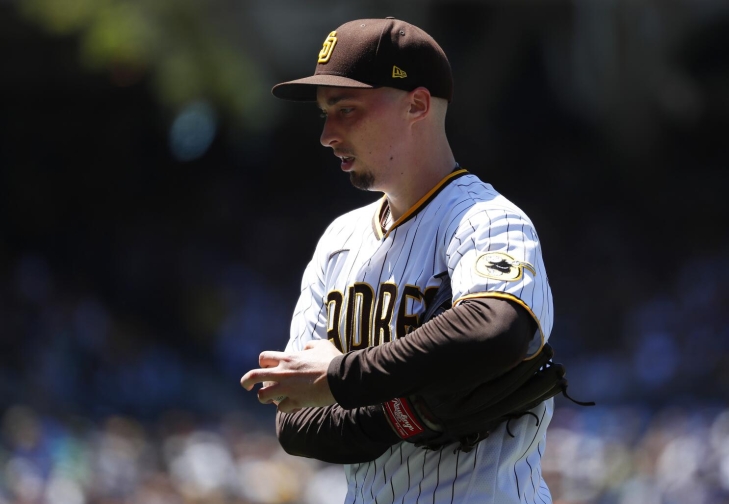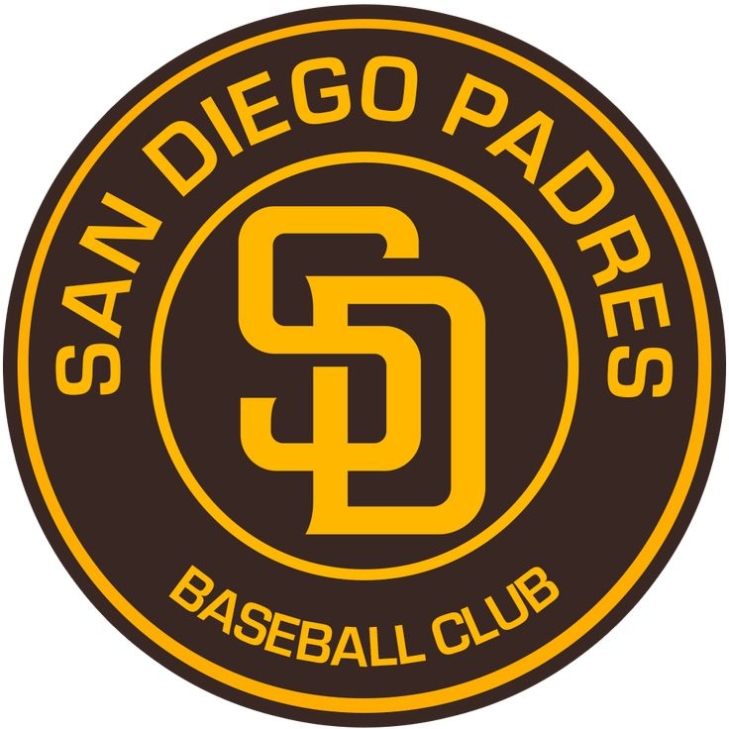Our All Time Top 50 San Diego Padres have been revised to reflect the 2024 Season
Yes, we know that this is taking a while!
As many of you know, we at Notinhalloffame.com are slowly generating the top 50 of each major North American sports team. That being said, we have existing Top 50 lists and consistently look to update them when necessary and based on necessity. As such, we are delighted to present our post-2024 revision of our top 50 San Diego Padres.
As for all of our top 50 players in baseball, we look at the following:
1. Advanced Statistics.
2. Traditional statistics and how they finished in the National League.
3. Playoff accomplishments.
4. Their overall impact on the team and other intangibles that are not reflected in a stat sheet.
Please note that our algorithm has changed, which yielded minor changes throughout the baseball lists.
Last year, the Padres won 93 Games and made it to the Division Series, where they lost to the eventual World Series Champions, the Los Angeles Dodgers. There were four new entrants bases on 2024, and several elevations.
As always, we present our top five, which saw one change based on the new algorithm.
1. Tony Gwynn
4. Jake Peavy
5. Randy Jones
You can find the entire list here.
Winfield moved ahead of Peavy to claim the #3 spot.
Infielder Manny Machado climbed one spot to #6.
Another Infielder, Fernando Tatis Jr., moved to #7 from #10.
The first of four new entrants is Infielder, Ha-Seong Kim, who is now with Tampa. He enters at #25, and was erroneously left off last year’s revision.
Second Baseman Jake Cronenworth advanced to #28 from #34.
Pitcher Blake Snell, who is now with the Giants, climbed to #34 from #40.
Outfielder Jurickson Profar, who is now an Atlanta Brave, debuts at #42.
Pitcher Joe Musgrove enters at #43.
Pitcher Yu Darvish begins his Padres list at #44.
We thank you for your continued support of our lists on Notinhalloffame.com.
44. Yu Darvish
Yu Darvish was highly sought after in 2012, and the Japanese star signed with the Texas Rangers where he was a four-time All-Star. The hurler later played for the Dodgers and the Cubs, and in 2021, as a veteran star, Darvish was dealt to the Padres, where he still plies his trade.
Darvish, and his primary Catcher, Victor Caratini have played well for the Padres where the hurler was an All-Star in 2021, and won 16 Games with a 3.10 ERA the year after.
Entering 2025, Darvish is in his late 30s, but still is a potent starter in the Majors. If he has a solid campaign in 2025. He should be able to vault at least ten spots in next year’s rank.
43. Joe Musgrove
After five seasons spent with Houston and Pittsburgh respectively, Joe Musgrove was traded to San Diego, and the California weather must have agreed with him as the past four seasons have been the best of the right-hander’s career.
Musgrove threw a no-hitter in his first season as a Padre, finishing the year with an 11-9 record, 203 Strikeouts and a 3.18 ERA. He followed that up with his first All-Star, and a season where he posted his first 3.00 ERA (2.93). Since then, Musgrove has dealt with injuries, including a torn UCL that will cost him the entirety of 2025. If he returns healthy in 2026, he should be able to shoot up this list.
42. Jurickson Profar
A former member of Curacao’s Little League World Series Team, Profar made the Majors as a teenager, first playing for Texas before he was traded to Oakland, who swapped him to San Diego before the COVID-shortened 2020 Season.
Profar came into his own as a Padre, and in 2022, had his best defensive season while providing 140 Hits and 15 Home Runs. Off the strength of that campaign, he signed with Colorado but after an awful start he was released and resigned with the Padres, where he played back like he did in ’22. In 2024, Profar had 158 Hits, 24 Home Runs with an .839 OPS and was an All-Star and Silver Slugger for the first time. That ended Profar’s second run in San Diego, as he signed with Atlanta in 2025.
25. Ha-Seong Kim
A star in the Korean League where he showcased power and defense, Ha-Seong Kim entered the International Portal and signed with the San Diego Padres in 2021 where he played four seasons.
Kim’s infield versatility was valuable to San Diego, and he would win a Gold Glove in 2023. With solid defensive metrics, Kim produced at the plate for the Padres with 418 Hits and 47 Home Runs, and his overall play in 2023 gained him a 14th place finish in NL MVP voting.
Our All-Time Top 50 San Diego Padres have been revised to reflect the 2023 Season
Yes, we know that this is taking a while!
As many of you know, we here at Notinhalloffame.com are slowly generating the top 50 of each major North American sports team. That being said, we have existing Top 50 lists out, and we always consistently look to update them when we can and based on necessity. As such, we are very happy to present our post-2023 revision of our top 50 San Diego Padres.
As for all of our top 50 players in baseball, we look at the following:
1. Advanced Statistics.
2. Traditional statistics and how they finished in Major League Baseball.
3. Playoff accomplishments.
4. Their overall impact on the team and other intangibles that are not reflected in a stat sheet.
Last year, the Padres were considered to be World Series contenders, but they failed even to make the playoffs while barely having a winning record. Nevertheless, there were three elevations and two new entrants to the list.
As always, we present our top five, which saw no changes:
1. Tony Gwynn
3. Jake Peavy
5. Randy Jones
You can find the entire list here.
Manny Machado, had a modest jump from #9 to #7.
Fernando Tatis Jr., who won his first Gold Glove last year, rocketed to #10 from #20.
Jake Cronenworth also rose, climbing to #34 from #39.
Making the list were reigning Cy Young winner, Blake Snell, who enters at #40, and current New York Yankee Outfielder, Trent Grisham, who debuts at #47.
We thank you for your continued support of our lists on Notinhalloffame.com.
50. Trent Grisham
The San Diego Padres acquired Trent Grisham via trade after he played in 51 games with Milwaukee.
Grisham took over the Centerfield position for the Padres and quickly established himself as an exceptional fielder despite being a light hitter. In 2020, he won a Gold Glove with an OPS of .808, which was arguably his best season in San Diego even though it was shortened by the COVID-19 pandemic. The following year, he batted .242 with 15 Home Runs, but his Batting Average dropped to .184, which is below the Mendoza Line. However, he still managed to hit 17 Home Runs and win his second Gold Glove. In 2023, he failed again to finish over .200 in BA, but his defensive prowess remained solid.
Following the 2023 season, the Padres traded Grisham to the Yankees.
34. Blake Snell
Blake Snell won the American League Cy Young Award in 2018 while playing for the Tampa Bay Rays. The San Diego Padres acquired him before the 2021 season, hoping to see the same level of performance from the left-handed pitcher. However, Snell's first year with the Padres was not as impressive as expected, as he had an ERA over four, but he did manage to strike out 170 batters.
In 2022, he showed some improvement (8-10, 3.38 ERA, 171 SO), but still fell short of expectations. However, Snell bounced back in 2023 and joined the exclusive club of pitchers who have won the Cy Young Award in both leagues. He won 14 games with 9 losses, led the NL in ERA (2.25), ERA+ (182), and H/9 (5.8), and set a personal best in strikeouts (234). Despite his outstanding performance, the Padres failed to make the playoffs, leaving a bittersweet taste.
The Padres would make the playoffs in 2024, but did so without Snell, who left the club for their NL West rival, San Francisco in free agency.
Our All-Time Top 50 San Diego Padres have been updated to reflect the 2022 Season
Yes, we know that this is taking a while!
As many of you know, we here at Notinhalloffame.com are slowly generating the 50 of each major North American sports team. That being said, we have existing Top 50 lists out and we always consistently look to update them when we can and based on necessity. As such, we are very happy to present our post 2022 revision of our top 50 San Diego Padres.
As for all of our top 50 players in baseball we look at the following:
1. Advanced Statistics.
2. Traditional statistics and how they finished in the National League.
3. Playoff accomplishments.
4. Their overall impact on the team and other intangibles not reflected in a stat sheet.
Last year, the Padres loaded up for a run to the World Series, but they were unable to win the pennant. 2022 yielded one new entrant to the Top 50, and some elevations.
As always, we present our top five, which had no changes.
1. Tony Gwynn
3. Jake Peavy
5. Randy Jones
You can find the entire list here.
Manny Machado, who was the runner-up for last year’s MVP exploded to #9 from #28.
The one new entrant was Jake Cronenworth, who has gone to the last two All-Star Games. He enters at #41.
We welcome your input and comments and as always, we thank you for your support.
28. Jake Cronenworth
Jake Cronenworth was a Tampa Bay Ray Draft Pick, but he was traded oo the Padres organization while he was still in the Minors. In looking at the transaction, Cronenworth was the steal.
The Infielder debuted for San Diego, where he was the National League Rookie of the Year runner-up. Cronenworth improved as a sophomore, earning an All-Star appearance, and concluding the year with 21 Home Runs, 71 RBI, and 151 Hits. 2022 was just as good (17 HR, 88 RBI), with Cronenworth adding a second All-Star.
Cronenworth missed some time in 2023, and his numbers slipped to 105 Hits and 10 HR, though increased to 139 Hits and 17 HR in 2024.. He will need to go back to All-Star level to make a serious jump on this list.
37. Roberto Alomar
The Hall of Fame career of Roberto Alomar began in 1988 with the San Diego Padres, and he did not take long to prove he was a star on the rise.
Alomar was fifth in Rookie of the Year voting, batting .266 with 145 Hits. Improving that to 184 Hits and a .295 Average, Alomar swiped 42 bases, his high as a Padre. A good defensive player, Alomar did not win a Gold Glove but was worthy of consideration during his stay in San Diego. Alomar went to his first All-Star Game in 1990, again batting over .280, but this was his last year in Southern California.
Alomar was traded to Toronto after the 1991 Season, and would achieve greater success, winning two World Series Rings and multiple All-Stars. He was inducted into the Baseball Hall of Fame in 2011.
36. Fred McGriff
Fred McGriff had a long career in professional baseball, blasting Home Runs everywhere he went. One of those stops was in San Diego, where he was traded from Toronto before the 1991 Season.
The slugger played for San Diego for two-and-a-half years, and he did what he did as a Blue Jay, in that he was an offensive juggernaut. An All-Star in 1992, McGriff led the National League in Home Runs (35), had 104 RBIs, and had an OPS of .950, a then-record for the "Crime Dog."
McGriff was traded to the Atlanta Braves in July of 1993, and as a Padre, McGriff secured 84 Home Runs with a .519 Slugging Percentage.
33. Will Venable
A second-generation MLB player and All-Ivy League player at Princeton, Will Venable played the first seven-and-a-half years of his nine-year career with the Padres.
The Outfielder first earned a spot with the parent club in 2008, three years after he was drafted, but it would take until 2012 for him to gain his first 100 Hit year. Venable only did that one more time, 2013, where he had career-highs in Hits (129), Home Runs (22), and Batting Average (.268), and realistically he was the fourth Outfielder as a Padre, but he brought the team depth in an important role for years.
Venable had 694 Hits as a Padre.
49. Kevin Brown
Yes, we know.
Again, we know.
The San Diego Padres have been in existence for over a half-century, so how can we rank a player regardless of position at all?
Here is how.
Kevin Brown's single season in San Diego is the greatest in franchise history and is so by far.
Let’s repeat it.
Yes, we know.
Again, we know.
The Padres have had Cy Young winners, and Brown was not one of them. Brown is also a player who only was a Padre for one year, but in terms of bWAR and other advanced metrics, he exceeds that of many other San Diego Pitchers who played far longer with the team.
The year in question was 1998, the year after he was traded from the Florida Marlins, who won the 1997 World Series and held a fire sale to get rid of all their stars. It can be argued (and we have) that the Marlins do not win the World Series without Brown, and we will make the same statement that San Diego does not win the 1998 Pennant without Brown.
In 1998, Brown led the NL in bWAR for Pitchers (8.6) and FIP (2.23), won 16 Games, and was second in WHIP (1.066), ERA (2.38), and Strikeouts (257). The Padres advanced to the World Series, and Brown was great over his first two playoff series, though his World Series was not great. He didn't win the Cy Young, but TSN named him the Pitcher of the Year.
Brown left the Padres as a Free Agent for the Dodgers, and his brief but brilliant stay in San Diego ended.
40. Steve Finley
Steve Finley played for eight Major League Teams, the third being San Diego. While it can be stated that Finley proved his worth as a potential All-Star as an Astro, it was with the Padres where he proved it.
Finley was traded from Houston along with Ken Caminiti and many others going into 1995; he batted over .290 in his first two years, showed increased power numbers, belting 30 Home Runs in 1996, and was tenth in MVP voting. Finley made the All-Star Game for the first time in 1997, and though his 1998 numbers were weaker, Finley showed his merit. He left as a Free Agent for Arizona in 1999.
His inconsistent defense hinders Finley's rank, and while he won two Gold Gloves as a Padre, the advanced metrics did not warrant it. Nevertheless, as a Padre, Finley had 662 Hits, 82 Home Runs, and batted .276.
27. Wil Myers
After winning the American League Rookie of the Year, Wil Myers was part of a monster three-team trade that sent him to San Diego for the 2015 Season.
Myers was not been the most consistent player since his arrival to the West Coast, but there have been flashes of brilliance. An All-Star in 2016, Myers developed his power game that year, belting 28 Home Runs that year and 30 the year after. The Centerfielder's best year to date is arguably the COVID-shortened 2020 Season, where he batted .288 with 15 Home Runs and was 16th in MVP voting. That was Myers' best time in San Diego, as his production slipped afterward before he left for Cincinnati as a Free Agent after the 2022 Season.
Myers had 134 Home Runs and 771 Hits with the team.
41. Mark Loretta
After eight seasons, most of which with the Milwaukee Brewers, Mark Loretta signed with the San Diego Padres for the 2003 Season, and he had the best run of his career as a Padre.
Loretta took over at Second Base for San Diego, and in 2003, he batted .314 with 13 Home Runs and 185 Hits, a very good year for him, but he had something better planned in 2004. An All-Star for the first time, Loretta had career-bests in Runs (108), Hits (208), Doubles (47), Home Runs (16), RBIs (76), and the Slash Line (.335/.391/495), won the Silver Slugger and was ninth in MVP voting.
Loretta was not able to recapture that in 2005 but did in 2006…though, by that time, he had already been traded to Boston. With the Padres, Loretta batted .314 with 506 Hits.
32. Dave Dravecky
Dave Dravecky began his baseball career with San Diego in 1982, making the starting rotation during his rookie year. The southpaw was an All-Star as a sophomore, with a 14-10 year, and he followed that with back-to-back 2.93 ERA years and helped the Padres win the 1984 Pennant.
Dravecky continued to do well, but the struggling Padres traded him to the Giants. Dravecky contracted cancer in his pitching arm, eventually resulting in its amputation. Dravecky had a 53-50 Record with a 3.12 ERA with 456 Strikeouts with the Padres.
46. Tim Flannery
A tricky one to rank, Tim Flannery was one of the most popular players in the history of Padres baseball, although the position player never had a season where he had more than 108 Hits.
Flannery was with San Diego for all of 11 Seasons, appearing at Second, Third, or Shortstop, showing solid defensive versatility. While he was not a power hitter, Flannery was often used to pinch hit and would collect 631 Hits and bat .255 over his career.
After his career ended, Flannery became a Coach and would win three World Series Rings with San Francisco.
47. Dave Roberts
The first man with the name of Dave Roberts to play for the San Diego Padres, this incarnation was a Pitcher who was an original Padre, arriving as an Expansion Draft Selection from the Pirates organization.
Roberts did not do much in San Diego's inaugural year, but he improved in 1970, going 8-14 over 181.2 Innings with a 3.81 ERA. His 1971 Season proved to be Robert's best year in Baseball, when despite his losing 14-17 Record, he had a sweet ERA of 2.10, with a 1.109 WHIP. Roberts was sixth in Cy Young voting, the only season he ever received Cy Young votes, and he was easily the best player on the team.
Despite that strong campaign, San Diego traded him to Houston, but he never did equal 1971.


